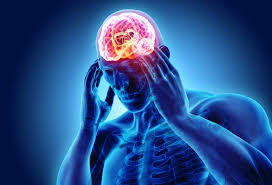Categories of Headaches and what your Body is telling you

Luper Moses
Medically headache at different parts of your head mean different things. Many times when we have headache, the impulse reaction is to take medication most especially the common drug paracetamol or Panadol. Sometimes the drug or medication works other times it triggers other health problems in our body. Some people look at the issue of headache as a normal thing, but medically it is not. So what then are the categories of these headaches and how does the body react to it?
Broadly, headaches can be grouped into primary headaches and secondary headaches.
Primary headaches entail that the headache is the main problem while Secondary headache is a symptom of a health problem in our body system. Clinically other ways to look at headaches is by how often they occur; episodic or chronic. Episodic means the headache comes and go whereas when it is chronic (severe) means they occur once in a while.
So, what is the first and immediate thing you should do when you are experiencing a headache?
- Check your blood pressure
- Drink a lot of water
3.Make sure you have adequate rest
For a deeper understanding on the intensity and how and where they occur it is important that we know the different categories of headache which include:
Tension headaches
Cluster headaches
Migraine headaches
Hormonal headaches
Allergy/Sinus headaches
Caffeine headaches
Exertion headaches
Hypertension headaches
Rebound headaches
Post-traumatic headaches
Tension headaches: This starts out as a dull, aching feeling all over your head. It is not throbbing and you may feel pain around your neck, forehead, scalp or shoulder muscles. It is usually triggered by lack of sleep and stress. Medical research has proved that people who work late into the night and stressful day without corresponding meals are likely to suffer from this category of headache.
Cluster Headaches: Pain here is usually burning and piercing. They occur around or behind one eye or on one side of the face at a time. Sometimes sweating may occur on the side where the pain is being experienced. You may also notice your eyes begin to water and your nostrils on the side that has the pain suddenly feel like they are blocked. These headaches occur in a series. Each individual headache can last from 15 minutes to three hours. Most people experience one to four headaches a day, usually around the same time each day, during a cluster. After one headache resolves, another will soon follow. Series of cluster headaches can be daily for months at a time. In between headaches one may not experience any challenge. Men experience more cluster headaches than women.
Migraine headaches: This is an intense throbbing pain felt within the head. This pain can last for days. The headache significantly limits your ability to carry out your daily routine. It is usually one-sided and may be accompanied by sensitivity to light and sound. Nausea and vomiting may occur. Any headache that leads to vomiting, blood pressure should be checked. This is a warning sign that the individual experiencing the headache may soon have a stroke
Hormonal headaches: Many women experience headache caused by changes in their hormones. The headache developed in either the 2days leading up to a period or the first 3 days during a period. This is because the natural drop in oestrogen level at these times. Other causes include combined oral contraceptive pill as some women find their headache improve when they are on the pill, but some experience headache more frequent due the drop in oestrogen. Menopause could be another cause of this headache because usually as women approach menopause they tend to experience this headache because the normal hormone cycle is disrupted. In some cases, is pregnancy which can get worse in the first few weeks of conception, but they usually improve or stop completely during the last 6 months; they do not harm the baby though.
Self-tips that help to cure this headache include:
- Eat small to keep your body sugar level up. Missing meals or going too long without food can trigger attacks. Have a small snack before going to bed and always eat breakfast.
- Have a regular sleep pattern, and avoid too much or too little sleep
- Avoid stress. If this proves difficult, find ways to deal with stress, such as taking regular exercises and using relaxation strategies.
Allergy/Sinus headaches: some of the common allergies that can lead to headache are:
- Allergic rhinitis (hay fever): If you have a headache along with seasonal and indoor nasal allergies, it is more likely due to a migraine headache rather than allergies. However, pain related to hay fever or other allergic reactions may cause headache due to Sinus diseases
- Food allergies: there can be a relationship between food and headache. For instance, chocolate can trigger a migraine in some people. Sometimes the occurrence is as a result of the chemical properties in the food that causes the headache.
- Histamine: the body produces histamines in response to an allergic reaction. Among other things, histamine s decrease blood pressure (vasoldilation). This can cause headache.



